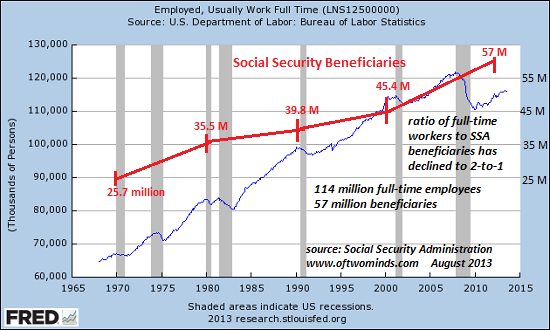Depending on blowing the next bubble to temporarily prop up the economy is the height of foolhardy shortsightedness.
All the conventional policy fixes proposed by Demopublican politicos, technocrats and the vast army of academic/think-tank apparatchiks are the equivalent of slapping a coat of paint on a fragile facade riddled with dryrot. All these fake-fixes share a few key characteristics:
1. They focus on effects and symptoms rather than address the underlying causes, i.e. the dryrot at the heart of our government, society and economy.
2. They maintain and protect the Status Quo Powers That Be–no vested interests, protected fiefdoms or Financial Elites ever lose power as a result of these policy tweaks.
3. They are politically expedient, meaning they assuage the demands of vested interests rather than tackle the rot undermining the nation.
4. They ignore the perverse incentives built into current systems and the incentives of complicity, i.e. to cheer another coat of paint on the dryrot rather than face the costs of real reform.
The financial underpinnings of the economy and society are rotting from within:finance, higher education, defense, healthcare, law, governance, you name it.
This week I want to highlight a few key causes of this pervasive and eventually fatal systemic rot.
Let’s start with Our Ponzi Economy. There are three primary examples of our Ponzi Economy: pay-as-you-go social programs (Social Security, Medicare, Medicaid, etc.); housing and the stock market. All are examples of financial Ponzi schemes.
All Ponzi schemes rely on an ever-expanding pool of greater fools who buy into the scheme and pay the interest/gains due the previous pool of greater fools. Ponzi schemes fail because the pool of greater fools is finite, but the scheme demands an ever-expanding pool of participants to function.
All Ponzi schemes eventually fail, though each is declared financially soundbecause this time it’s different. The number of greater fools required to keep the scheme going eventually exceeds the working population of the nation.
Here’s why Pay-As-You-Go Social Programs are all Ponzi schemes:
1 retiree consumes the taxes paid by 5 workers.
Those 5 workers when they retire consume the taxes paid by 25 workers.
Those 25 workers when they retire consume the taxes paid by 125 workers.
Those 125 workers when they retire consume the taxes paid by 625 workers.
Those 625 workers when they retire consume the taxes paid by 3,125 workers.
You see where this goes:Â very quickly, the number of workers required to keep the Ponzi scheme afloat exceeds the entire workforce.
The only way to keep the Ponzi scheme going is to keep raising payroll taxes on the remaining workers, which is precisely what welfare states (i.e. every developed economy on the planet) has done.
But raising taxes merely extends the Ponzi scheme one cycle. Eventually, taxes are so high that the remaining workers are impoverished. Right now, the U.S. has reached a ratio of 2 full-time workers for every retiree. As the number of retirees rises by thousands every day and the number of full-time jobs stagnates, the ratio will slide toward 1-to-1:
The Problem with Pay-As-You-Go Social Programs: They’re Ponzi Schemes (November 5, 2013)

Estimates are even worse in other developed nations. In Europe, the ratio of retirees over 65 to those between 20 and 64 will soon reach 50%–and that’s of the population, not of people with full-time jobs paying taxes to fund social welfare programs. (source: Foreign Affairs, July/August 2014, page 130)
As the percentage of the working-age populace with full-time jobs declines, the worker-retiree ratio will become increasingly unsustainable. The taxes paid by each worker are nowhere enough to fund the generous pension and healthcare benefits promised to every retiree.
In the U.S., the number of people of working age who are jobless is 92 million; the number of full-time jobs is 118 million. This chart of labor participation includes almost 30 million part-time employees who don’t earn enough to pay substantial taxes and millions of self-employed people making poverty-level net incomes.

Â

